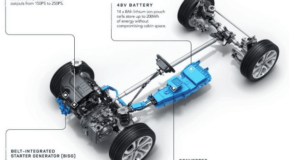
What Safety Technology Will All Cars Of The Future Have?
The technology one can find in today’s cars is far advanced to the cars of even five or ten years ago. Car manufacturers are always developing new ways to make their vehicles safer on the road.
It would seem the car safety revolution first started when Swedish firm Volvo developed safety belts. That invention from 1959 is one that all car makers soon adopted. And many governments around the world have made it illegal to drive cars without seat belts.
In 1978, Mercedes-Benz and Bosch developed ABS for the S-Class saloon. It was an invention that you now find in today’s modern cars. But what safety features are we likely to find as standard in the cars of tomorrow? Here are a few examples of the present and future technology we will likely see in future vehicles.
Lane Departure Warning Systems
It’s a technology called different things by various car manufacturers. But the basic idea behind it remains the same. When you’ve been driving for a while, have you ever veered into another lane by accident?
The sad truth is it’s a problem that happens on a daily basis around the world. It usually happens because we feel tired and don’t concentrate on what we’re doing. As a result, that momentary lapse of concentration can end up with severe consequences.
Collisions caused by fatigue account for up to 40% of all road traffic accidents and 20% of all deaths. As you can see, it’s a significant problem. The motor industry have come up with one solution that we’re likely to see in all cars in the future.
Lane departure warning systems get used on major roads like motorways. If they detect that your car veers into another lane without signalling first, warnings get shown to the driver. They are both audible and visual warnings.
Some cars sold by McDougal & Breen today come with these systems as standard, but the technology isn’t widespread. We are likely to see it in all cars of the future. At the time of writing, some major governments are deciding whether to mandate this system.
Vehicle-to-vehicle communications
The technology that allows cars to “talk” to each other first got developed back in 1997. As you can appreciate, things have moved on since those days. Nowadays, the technology behind wireless vehicle communications is more advanced.
Of course, you might be wondering what the point is of such technology. Why do cars need to talk to each other? After all; they are just mechanical devices on wheels, right? What might surprise you is that such technology can help to save lives and minimise the amount of car accidents that occur!
An official study even suggested that 34,000 deaths in the US alone are preventable with such technology. Those are statistics that are hard to ignore! So, we know that wireless vehicle communications can make our time on the road safer. But how can they achieve such goals?
They can do so by telling each other all kinds of useful data. Examples include traffic information, safety warnings (i.e. adverse weather) and more. People could find out such information themselves, but it seldom gets communicated to them on a regular basis. And, of course, they would need to go online or listen to the radio for that to happen first!
The technology is promising. Car makers like Ford and General Motors are investing into it for inclusion in current and future models. The growth rate of this technology suggests all cars will have it as standard within ten to twenty years.
Electronic Stability Control
Many of today’s new cars come with electronic stability control as standard. It’s a technology that’s built on top of ABS.
The way that ESC works is simple. When the system detects that one or more of the road wheels are skidding, it applies the brakes to those wheels to regain traction. It’s useful in situations where one encounters adverse driving conditions at random.
Some electronic stability control systems even reduce engine power. Doing so assists the car in getting traction back again. The first production car to feature electronic stability control dates back to 1983, believe it or not!
The Toyota Crown dubbed the system “anti-skid control.” A few other car models included the technology over the years. But the first mass-market cars to feature them were BMWs in 1992. They developed the technology with German firm Bosch.
Countries like the United States made it mandatory for all new cars to have the technology since 2012. Australia followed suit in 2013, and the European Union in 2014.
Blind spot monitoring
It’s a well-known fact that all cars ever built have “blind spots.” These are areas where you cannot have a clear view of the environment around you while sitting in your car. Many road traffic accidents occur when drivers fail to see hazards on the road. Such as other motorists approaching in lanes either side of them.
Blind spot monitoring systems use sensors to detect any potential hazards and alert the driver to them. Some systems also include the provision for vehicle detection. Such as when reversing into a main road, for example.
Volvo, then under Ford ownership, were the first car maker to develop such an innovative system. The Ford Motor Company have the patent rights to the technology and have used it in many of their current models.
The first car to feature blind spot monitoring technology was the Volvo S80 saloon. Because of its low cost to make, it’s likely you will see it in all future models from popular car marques.
Traffic sign recognition
One major problem that plenty of motorists have is missing or avoiding what traffic signs tell them. In particular, the signs that indicate the speed limit! Traffic sign recognition is a promising technology for all future vehicles.
It will alert drivers when they approach road signs indicating the speed limit. And even when they are getting near to a school, for example. The system is designed to prevent drivers from breaking the law on the road.




















